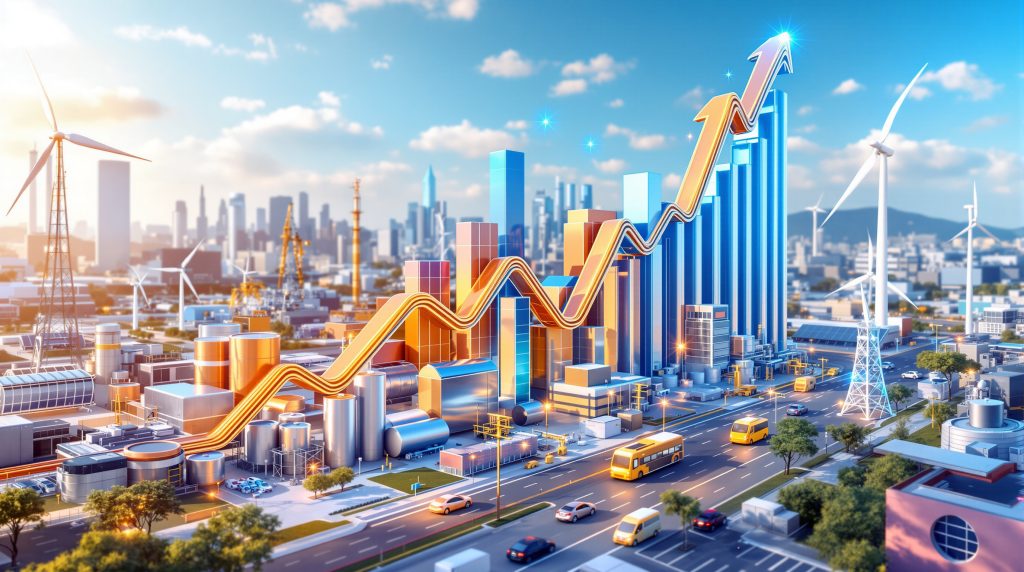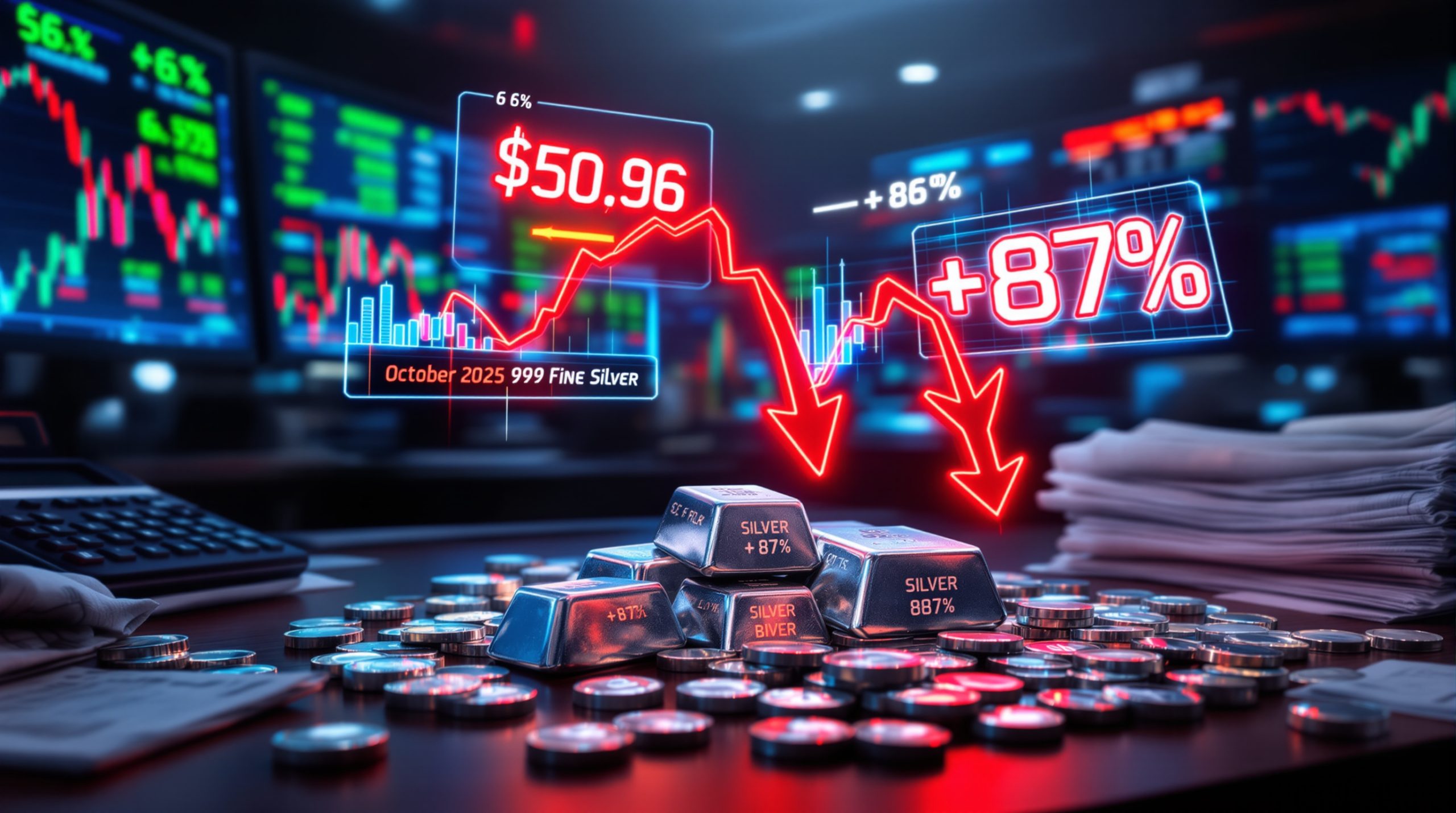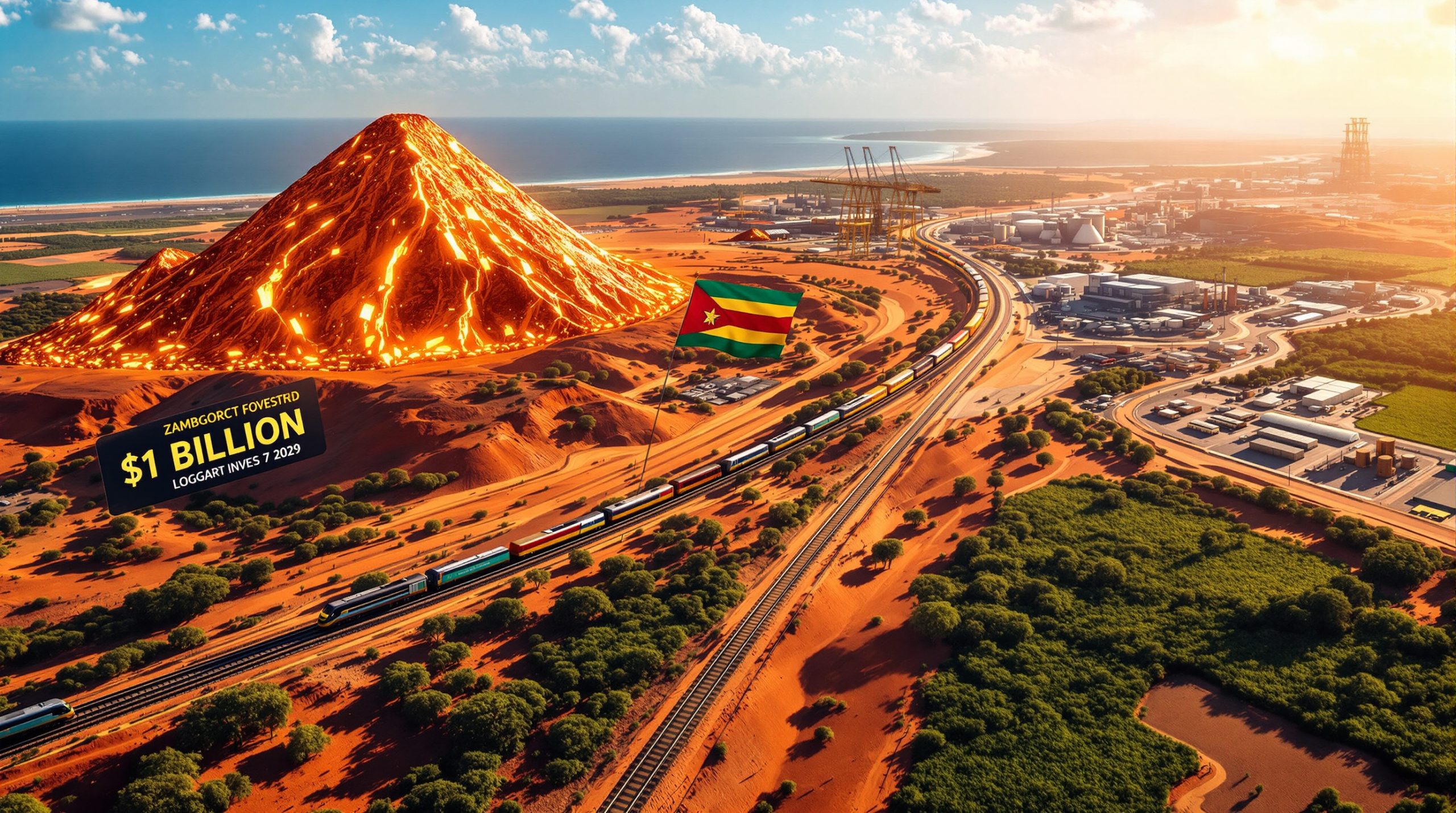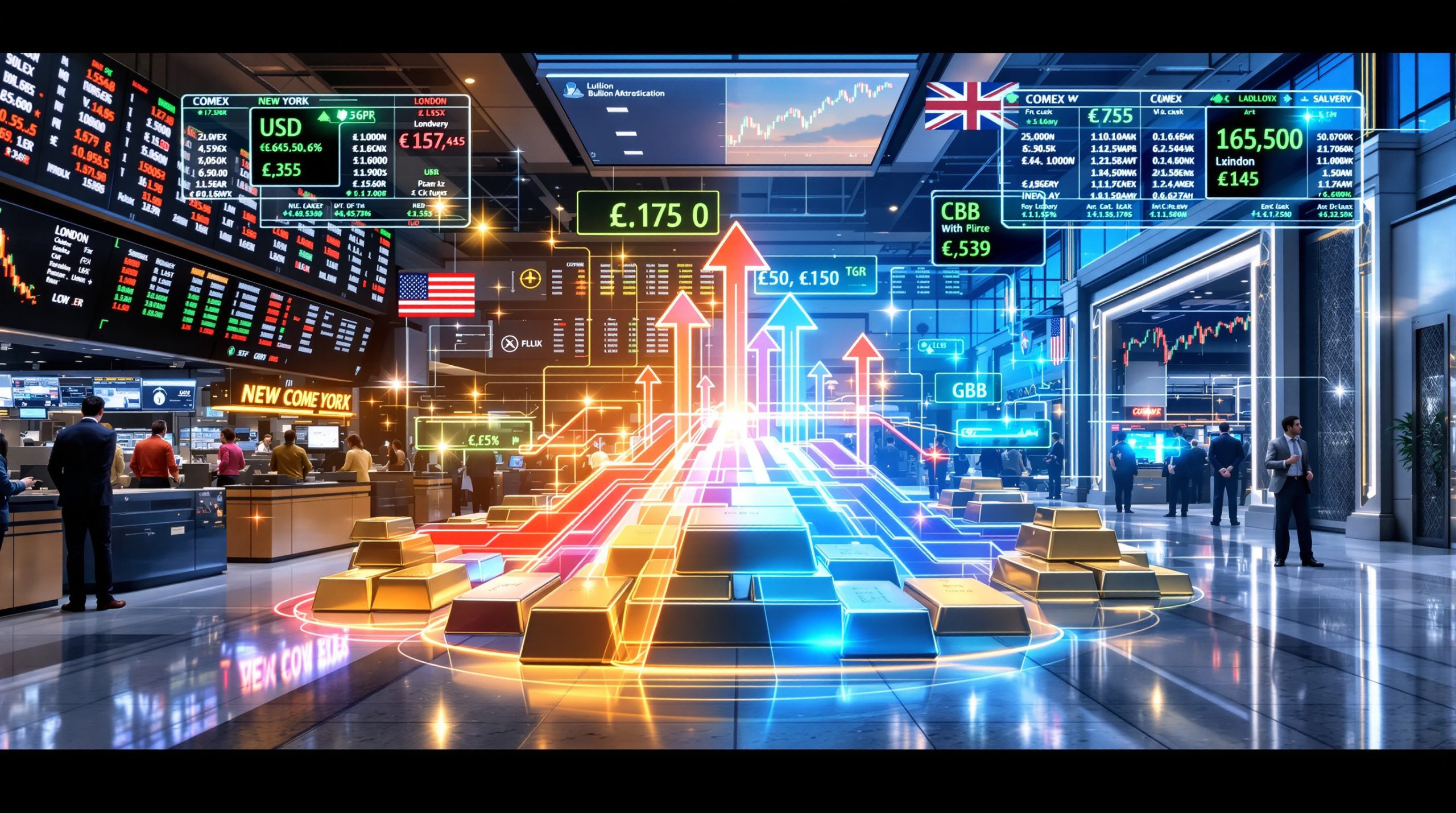How Will Global Economic Factors Shape Industrial Metals Markets by 2026?
The industrial metals landscape is poised for significant transformation through 2026, driven by a complex interplay of macroeconomic forces, geopolitical dynamics, and technological evolution. According to the International Monetary Fund's latest projections, global economic expansion is expected to maintain a moderate pace of 3.2% for 2024 and 3.1% for 2025, creating sustained but tempered demand for industrial metals across key sectors.
Economic growth trajectories will vary significantly by region, with important implications for metals consumption patterns. While advanced economies are projected to grow at a more modest 2.0-2.5% annually, emerging markets are expected to outperform with growth rates averaging 4.0-4.5%, according to World Bank economic forecasts.
Key Economic Indicators Influencing Metals Markets
Interest Rate Environment: The U.S. Federal Reserve has maintained the federal funds rate at 5.25%-5.50% as of September 2024, with market expectations pointing toward gradual reductions through 2026. This normalization cycle will impact capital allocation toward mining projects, with potentially significant implications for future supply.
Currency Dynamics: The U.S. Dollar Index has shown volatility between 100-106 throughout 2024, creating corresponding fluctuations in metals prices. Since most industrial metals are priced in dollars, currency movements create an inverse correlation with metals valuations, affecting producer margins and consumer purchasing power.
Inflation Considerations: Raw materials inflation has moderated from peak levels in 2022-2023, but remains a consideration for metals-intensive industries. Producer price indices for manufacturing inputs continue to show above-trend growth of 3-4% annually in most major economies, which directly influences US economic indicators.
Regional Economic Influences on Demand
China's Consumption Patterns: China's economic transition from infrastructure-intensive growth toward a consumption-oriented model is creating divergent impacts across the metals spectrum. While traditional construction metals face moderating demand, those critical to electronics, consumer goods, and green technology continue showing robust growth. Additionally, iron ore price trends remain highly dependent on Chinese construction activity.
Emerging Market Acceleration: India's industrial production is expanding at 6-7% annually, with metals consumption growing even faster at approximately 8-10% per year. Southeast Asian economies collectively show similar patterns, with Vietnam and Indonesia leading regional metals demand growth.
Infrastructure Initiatives: Major infrastructure programs in North America and Europe, particularly grid modernization and transport system upgrades, are providing significant support for steel, copper, and aluminum demand. The Biden administration's Infrastructure Investment and Jobs Act continues directing substantial funding toward metals-intensive projects.
What Supply-Demand Dynamics Will Drive Metal Price Performance?
The fundamental balance between production capacity and consumption needs varies significantly across the industrial metals spectrum, creating divergent price trajectories that investors and industry participants must monitor closely.
Copper Market Dynamics Through 2026
Persistent Supply Challenges: According to the International Copper Study Group, global mine production reached approximately 22.2 million tonnes in 2023, but is struggling to keep pace with demand growth. New project development remains constrained by declining ore grades, which have fallen from approximately 1.6% in 1900 to around 0.6% today according to U.S. Geological Survey data.
Production Economics: The average capital intensity for new copper mine development has increased to $15,000-$20,000 per annual tonne of production capacity, up from $10,000-$12,000 a decade ago. This escalation makes project financing more challenging and extends development timelines.
Demand Acceleration: Electric vehicle production, renewable energy deployment, and grid modernization collectively represent powerful demand growth drivers. A typical electric vehicle requires 80 kg of copper compared to 20 kg for a conventional vehicle, according to International Energy Agency estimates, creating substantial incremental demand as EV adoption accelerates.
Aluminum Market Outlook
Energy Cost Considerations: Aluminum production is extraordinarily energy-intensive, with electricity costs representing 25-40% of total production expenses. This creates significant regional advantages for producers with access to low-cost, reliable power sources.
Regional Production Shifts: Middle Eastern producers have expanded capacity significantly due to access to relatively inexpensive natural gas for power generation. Meanwhile, European smelters face ongoing challenges from high energy costs, with several facilities operating at reduced capacity or facing potential closure.
Recycling Economics: Secondary aluminum production requires only about 5% of the energy needed for primary production, making recycling increasingly economical as environmental regulations tighten. Industry analysts project recycled content in aluminum products to reach 35-40% of total supply by 2026.
Nickel Market Trajectory
Segmentation Dynamics: The nickel market is increasingly bifurcated between battery-grade material (Class 1) and stainless steel-grade material (Class 2). This divergence is creating price premiums for high-purity nickel suitable for battery applications, with spreads widening to $3,000-$4,000 per tonne in some cases.
Indonesian Production Expansion: Indonesian nickel output has grown dramatically following export restrictions implemented in 2020, transforming global supply chains. The country's processing capacity continues expanding, though questions remain about the environmental footprint of these operations.
Battery Chemistry Evolution: While high-nickel cathode formulations currently dominate EV battery designs, ongoing research into alternative chemistries could potentially moderate nickel demand growth. Lithium iron phosphate (LFP) batteries have gained market share, particularly in certain vehicle segments and stationary storage applications.
How Will Green Energy Transition Impact Industrial Metals by 2026?
The accelerating shift toward renewable energy and electrification represents perhaps the most transformative force in industrial metals markets through 2026, creating unprecedented demand for certain metals while reshaping global supply chains.
Critical Metals for Energy Transition
Copper in Renewable Infrastructure: According to International Energy Agency data, wind turbines require approximately 4-5 tonnes of copper per megawatt of capacity, while solar photovoltaic systems need around 4 kg of copper per kilowatt. As renewable deployment accelerates, these intensity factors translate to substantial incremental demand and will significantly impact global copper supply.
Aluminum in Weight Reduction: Transportation electrification is driving increased aluminum usage as manufacturers pursue weight reduction strategies. Modern electric vehicles contain 250-350 kg of aluminum on average, approximately 30% more than conventional vehicles of comparable size.
Nickel in Battery Applications: High-energy-density batteries for EVs and stationary storage typically contain significant quantities of nickel. A 75 kWh nickel-manganese-cobalt (NMC) battery may contain 30-35 kg of nickel, creating substantial demand as battery production scales.
Infrastructure Requirements
Grid Modernization Investments: Power transmission networks require significant upgrades to accommodate renewable generation and increased electrification. These investments are highly metals-intensive, with a typical high-voltage transmission line requiring 8-10 tonnes of aluminum and 2-3 tonnes of copper per kilometer.
EV Charging Infrastructure: The global EV charging network expansion represents a significant source of metals demand, particularly for copper used in charging equipment, cabling, and connection infrastructure. A typical 50 kW fast-charging station contains 25-30 kg of copper, with higher-power stations requiring substantially more.
Energy Storage Deployment: Utility-scale battery storage installations continue growing rapidly, with annual deployments increasing 45-50% year-over-year in major markets. Each gigawatt-hour of battery capacity requires approximately 600-800 tonnes of various metals, including nickel, copper, aluminum, and manganese.
What Technological Developments Will Transform Metals Markets?
Innovation across mining, processing, and end-use applications will reshape the industrial metals landscape through 2026, potentially alleviating some supply constraints while creating new demand patterns.
Mining Technology Advancements
Autonomous Operations: Major miners including Rio Tinto and BHP are implementing autonomous mining systems at scale, reducing operational costs and improving safety outcomes. These technologies allow for continuous operation in challenging environments and optimize resource extraction.
Advanced Exploration Techniques: Machine learning algorithms applied to geological data are improving discovery rates for new deposits, potentially accelerating the pipeline of development projects. These techniques allow exploration teams to identify promising targets more efficiently and reduce drilling costs.
Processing Innovations: Hydrometallurgical processes are increasingly replacing traditional pyrometallurgical methods for certain applications, reducing energy consumption and environmental impact. These technologies allow for more efficient extraction from lower-grade ores that would otherwise be uneconomical.
Recycling and Circular Economy Progress
Advanced Separation Technologies: New mechanical and chemical separation methods are improving recovery rates for various metals from complex waste streams. These technologies allow for more complete material recovery and higher-purity recycled products.
Electronics Recycling: Electronic waste contains 40-50 times the concentration of gold and other valuable metals compared to naturally occurring ores, making urban mining increasingly economical. Recovery operations are becoming more sophisticated, capturing a wider range of metals from these complex products.
Design for Recyclability: Manufacturers are increasingly incorporating end-of-life considerations into product design, improving the economics of future recycling. Automotive and electronics producers are adopting more easily separated material combinations and standardized component designs.
How Will Geopolitical Factors Impact Industrial Metals Through 2026?
The increasingly complex global political landscape will continue influencing metals markets through trade policies, resource nationalism, and regional conflicts, creating both risks and opportunities for market participants.
Trade Policy Implications
Critical Minerals Focus: The U.S. has identified 50 mineral commodities as critical to economic and national security, according to the U.S. Geological Survey. This designation is driving policy initiatives aimed at securing supply chains and reducing import dependence.
Tariff Considerations: Under the Trump administration's second term, trade policy has maintained a focus on protecting domestic manufacturing and resource industries. Current metals tariffs remain in place, with tariff market impacts continuing to create price divergences between regional markets.
Regional Trade Arrangements: Preferential trading blocs are creating differential access to raw materials and finished goods, potentially fragmenting global metals markets. These arrangements can create significant price disparities between regions and complicate supply chain management for multinational operations.
Resource Nationalism Trends
Processing Requirements: Following Indonesia's lead with nickel, more resource-rich nations are implementing policies requiring domestic processing of raw materials before export. These initiatives aim to capture more value within national borders but can disrupt established supply chains.
Strategic Reserve Management: Several countries are expanding strategic stockpiles of critical minerals, affecting short-term market balances and price dynamics. These programs typically focus on metals with limited domestic production and concentrated global supply.
Investment Screening: Foreign investment in mining assets is facing increased scrutiny on national security grounds, potentially limiting capital flows and project development. These restrictions can delay or prevent certain transactions, affecting the pace of capacity expansion.
What Role Will ESG Factors Play in Industrial Metals Markets?
Environmental, social, and governance considerations are increasingly central to industrial metals production and consumption decisions, creating both compliance costs and market opportunities.
Environmental Impact Reduction
Carbon Footprint Focus: Primary aluminum production generates approximately 11.5 tonnes of CO2 per tonne of metal, according to the International Aluminium Institute, creating significant pressure for emissions reduction. Producers with access to renewable energy are gaining competitive advantages as carbon pricing mechanisms expand.
Water Management Priorities: Mining operations in water-stressed regions face intensifying scrutiny of their consumption patterns and potential impacts on local communities. Advanced water recycling systems and dry processing technologies are becoming standard in new project designs.
Biodiversity Considerations: Mining activities with potential impacts on sensitive ecosystems face more rigorous permitting requirements and operational restrictions. These considerations can significantly affect project economics and development timelines.
Social License Considerations
Community Engagement Practices: Meaningful consultation with local communities has become essential for project development, with inadequate engagement often resulting in delays or cancellations. Industry leaders have established dedicated community relations functions with substantial resources and authority.
Indigenous Rights Recognition: Resource development increasingly requires formalized agreements with indigenous groups holding traditional territorial rights. These partnerships typically include economic participation, employment opportunities, and environmental protection provisions.
Labor Standards Evolution: Supply chain due diligence requirements are expanding to encompass labor practices at mine sites and processing facilities. These standards affect sourcing decisions for manufacturers concerned about reputational risks.
Which Industrial Metals Show Strongest Performance Potential Through 2026?
Performance projections vary significantly across the industrial metals spectrum, with certain metals positioned for exceptional growth due to favorable supply-demand fundamentals and structural market shifts.
Top-Performing Industrial Metals Forecast
| Metal | Price Growth Potential (2025-2026) | Key Demand Drivers | Supply Constraints |
|---|---|---|---|
| Copper | 15-20% | EV production, renewable energy, grid modernization | Declining grades, project delays, limited discoveries |
| Nickel (Class 1) | 10-15% | High-energy battery production, aerospace alloys | Processing bottlenecks, chemistry segregation |
| Aluminum | 8-12% | Transportation lightweighting, packaging, construction | Energy costs, emissions regulations |
| Tin | 12-18% | Electronics manufacturing, solder applications | Mine depletion, concentrated production |
| Zinc | 5-8% | Galvanized steel, infrastructure development | Mine closures, environmental restrictions |
Underperforming Metals Outlook
Iron Ore Prospects: Global steel production growth is moderating as China's construction sector adjusts to lower activity levels. This transition is creating headwinds for iron ore pricing, with potential downside of 5-10% through 2026 as new supply from Brazil and Australia enters the market.
Lead Market Challenges: Traditional lead-acid battery applications face increasing competition from alternative technologies, particularly in automotive applications. While industrial applications provide support, overall demand growth is limited to 1-2% annually.
Manganese Considerations: Ample supply from South Africa, Australia, and Gabon is expected to meet moderate demand growth in steel and battery applications. While high-purity manganese for batteries commands a premium, the broader market appears well-supplied.
How Are Major Mining Companies Positioning for 2026?
Industry leaders are implementing strategic initiatives to capitalize on evolving market conditions through 2026, with most focusing on portfolio optimization, technological adoption, and capital discipline.
Portfolio Optimization Strategies
Asset Quality Focus: Major miners are prioritizing tier-one assets with long life spans, low production costs, and expansion potential. This approach emphasizes operational reliability and sustained cash generation over production volume growth.
Commodity Mix Adjustments: Many diversified miners are increasing exposure to energy transition metals while reducing investments in thermal coal and other environmentally challenged commodities. These portfolio shifts reflect changing demand patterns and investor preferences.
Geographic Risk Management: Political stability and regulatory predictability are receiving increased weight in investment decisions, with some companies reducing exposure to higher-risk jurisdictions. This approach may limit production growth but improves risk-adjusted returns.
Capital Allocation Priorities
Expansion Discipline: Most major miners are maintaining conservative capital allocation frameworks, prioritizing brownfield expansions and incremental optimizations over large greenfield developments. This approach limits risk while maintaining production levels and extending mine life.
Technology Investment: Digital transformation, process automation, and energy efficiency initiatives are receiving significant funding, with expected returns through cost reduction and operational stability. These investments typically offer shorter payback periods than traditional capacity expansions.
Shareholder Returns: The industry has largely maintained its focus on returning capital to shareholders through dividends and share repurchases, reflecting skepticism about the returns available from major growth projects. This discipline has improved the sector's standing with investors but may constrain future supply growth.
What Investment Strategies Will Succeed in Industrial Metals Through 2026?
Navigating the industrial metals sector requires nuanced approaches to capitalize on divergent performance across the metals spectrum, with successful strategies balancing exposure to high-potential segments with appropriate risk management.
Portfolio Construction Approaches
Thematic Positioning: Energy transition exposure represents a compelling investment thesis, with companies focused on copper, nickel, and aluminum potentially outperforming broader commodity indices. This approach targets structural rather than cyclical growth drivers.
Value Chain Integration: Combining upstream resource ownership with midstream processing capability provides operational flexibility and exposure to multiple profit pools. This integrated approach can reduce earnings volatility through market cycles.
Operational Excellence Focus: Companies with demonstrated cost leadership and operating efficiency typically outperform during periods of price volatility. Investors should prioritize producers in the first or second quartile of their respective cost curves.
Risk Management Considerations
Geographic Diversification: Exposure across multiple regulatory and operating environments helps mitigate country-specific risks that can significantly impact mining operations. This diversification should consider both production locations and end markets.
Balance Sheet Strength: Financial flexibility remains essential given the capital-intensive nature of the metals industry and its inherent cyclicality. Companies with low leverage ratios and extended debt maturity profiles are better positioned for market disruptions.
Technological Adaptation: Companies embracing automation, digitalization, and advanced processing technologies are likely to outperform over the medium term as these investments improve cost structures and operational stability. Early adopters of mining innovation trends typically maintain their competitive advantages for multiple years.
What Are the FAQs About Industrial Metals Performance Through 2026?
Which industrial metal is projected to have the highest price growth through 2026?
Copper shows the strongest price growth potential through 2026, with projections indicating 15-20% appreciation. This exceptional performance is driven by accelerating demand from electric vehicle manufacturing, renewable energy deployment, and grid modernization, combined with persistent supply constraints from declining ore grades and limited new mine development.
How will China's economic trajectory impact industrial metals markets?
China's economic transition from infrastructure-intensive growth toward a consumption-oriented model will create divergent impacts across the metals spectrum. Traditional construction metals like steel and iron ore face moderating demand, while metals critical to electronics, consumer goods, and green technology should see continued strong consumption growth, albeit at lower rates than during China's peak infrastructure development period.
What role will recycling play in industrial metals supply through 2026?
Secondary supply from recycled sources is projected to grow 20-25% by 2026, moderating primary production requirements for several industrial metals. Aluminum will see the most significant impact, with recycled content potentially reaching 35-40% of total supply. Copper recycling is expected to contribute 8-10 million tons annually by 2026, representing approximately 35% of total consumption. These circular economy advances will partially offset mining supply constraints.
How might geopolitical tensions affect industrial metals availability and pricing?
Trade restrictions, resource nationalism, and regional conflicts could create significant price premiums of 10-15% in affected markets through 2026. Critical minerals strategies in major economies are reshaping supply chains, with preferential access arrangements and domestic processing requirements becoming more common. Companies are increasingly implementing geographic diversification strategies to mitigate these geopolitical risks.
Will ESG considerations significantly impact industrial metals production costs?
Environmental, social, and governance requirements are projected to add 5-8% to production costs for industrial metals through 2026, though these investments typically yield operational benefits through reduced energy consumption, improved community relations, and enhanced project approval timelines. Low-carbon production methods are increasingly commanding market premiums, particularly in aluminum, where "green aluminum" can achieve 10-15% price advantages in certain markets.
Further Exploration:
Readers interested in learning more about industrial metals market dynamics can also explore related educational content, such as CNBC's interview with Francisco Blanch, BofA Securities head of commodities and derivatives research, discussing the outlook for precious and industrial metals. Additionally, the World Bank's analysis of metal prices provides valuable context on how industrial activity affects commodity markets.
Ready to Capitalise on the Next Major Industrial Metal Opportunity?
Discover which metals are poised for significant growth before market movements occur with Discovery Alert's proprietary Discovery IQ model, delivering instant notifications on ASX mineral discoveries across all major industrial metals. Visit our discoveries page to understand how early identification of emerging opportunities can transform your investment portfolio.




